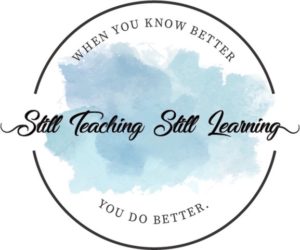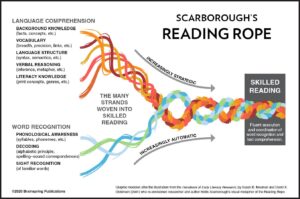Revised & updated on 6-20-23
Have you read The Knowledge Gap by Natalie Wexler? This is a great read for both teachers and parents which talks about the state of our public education system. In the book, Ms. Wexler makes the case that our public education system is “broken” (in terms of what is taught). But instead of just talking about how things are “broken”, Ms. Wexler gives actionable ideas for what to do instead.

Literacy Instruction
One major topic deals with some of the issues surrounding literacy instruction, specifically the whole language movement and the balanced literacy framework.
Even if you don’t agree with everything Ms. Wexler says, she does make many good points that teachers of grades 4- 12 students will recognize.
Specifically: students who have not been taught explicit phonics in early elementary grades will have a very difficult time decoding multi-syllabic words in upper elementary grades (and beyond).
She talks about our heavy emphasis on teaching reading comprehension strategies (how to make an inference, how to find the main idea, etc.) and why that isn’t working.
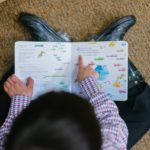


In Amazon’s description of the book:
It was only after years within the education reform movement that Natalie Wexler stumbled across a hidden explanation for our country’s frustrating lack of progress when it comes to providing every child with a quality education. The problem wasn’t one of the usual scapegoats: lazy teachers, shoddy facilities, lack of accountability. It was something no one was talking about: the elementary school curriculum’s intense focus on decontextualized reading comprehension “skills” at the expense of actual knowledge. . . rewards that have come along: students who are not only excited to learn but are also acquiring the knowledge and vocabulary that will enable them to succeed. If we truly want to fix our education system and unlock the potential of our neediest children, we have no choice but to pay attention.
I have to admit, as someone who has taught a balanced literacy framework for many years, she described many of the same frustrations I have experienced in upper elementary grades. So it was a little sobering for me to realize that doubling down on balanced literacy has only made the problems with students’ reading comprehension worse.
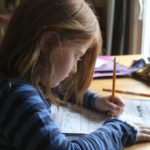


Currently, there is a strong emphasis on changing reading instruction to align with the Science of Reading. That is a good thing.
My only worry is that many people are thinking that “Science of Reading” just means adding a systematic, explicit phonics curriculum and then our kids will magically learn to read. I agree that phonics should not be optional.
Adding a phonics curriculum, if it is currently missing from your school or district instruction, is a good first step to align instruction with the Science of Reading.
But when you look at Hollis Scarborough’s The Reading Rope (below), you will notice that Word Recognition (which includes decoding and phonics) is only one part of that rope. Another equally important part is Language Comprehension (which includes background knowledge and vocabulary). So aligning reading instruction with the Science of Reading must include BOTH phonics instruction AND background knowledge and vocabulary.
If you want to read more, here is link to another study that talks about this problem. The article states:
This comes straight from the scientific research, which shows that reading comprehension is the product of two things. First, a child needs to be able to sound out a word. Second, the child needs to know the meaning of the word she just sounded out. So, in a first-grade classroom that’s following the research, you will see explicit phonics instruction and also lessons that build oral vocabulary and background knowledge. And you will see kids practicing what they’ve been taught.
If you would like to read more about these issues and what you can do differently in your own classroom, here are some helpful books.
Reading Above the Fray: Reliable, Research-Based Routines for Developing Decoding Skills by Julia Lindsey
How to Plan Differentiated Reading Instruction: Resources for Grades K-3 by Sharon Walpole & Michael C. McKenna
Differentiated Literacy Instruction in Grades 4 & 5 by Sharon Walpole, Michael C. McKenna, Zoi A. Philippakos, & John Z. Strong
Shifting the Balance by Jan Burkins & Kari Yates
Equipped for Reading Success by David A. Kilpatrick
The Writing Revolution by Judith C. Hochman & Natalie Wexler
Know Better, Do Better by David & Meredith Liben
Reading Reconsidered by Doug Lemov, Colleen Driggs, & Erica Woolway
If you’re into podcasts, there are a lot of good ones devoted to the Science of Reading. One of my favorites is Melissa & Lori Love Literacy.
Social Studies & Science Instruction
Another major topic in the book is the lack of content-area instruction, leading to a lack of “world knowledge” and leaving students unprepared for rigorous courses in high school. Ms. Wexler describes how students are so much more engaged when they are learning about topics related to history and science.
I agree that I have also seen the excitement that students show when they are learning “real” content about the world, primarily through science and social studies. You may have noticed the same thing.
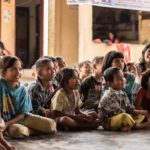


Ever since the advent of No Child Left Behind in 2002 (here is some background information from Education Week ), schools have focused on reading comprehension skills instruction and math instruction to the detriment of teaching science and social studies. This is because reading and math were tested subjects while science and social studies were not.
Some states implemented science testing in certain grades, but social studies continued to take a “back seat”. If it was taught at all, social studies got 30 minutes, often at the end of the day. This was also a time when students who needed “extra intervention” were pulled out of class.
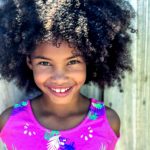


Another factor in the lack of world knowledge is that social studies standards have evolved over the years to teach about things like “my family” and “my community” in the earliest grades, rather than teaching students about topics they would not already know.
In the book, Ms. Wexler describes observing in classrooms and contrasts the classrooms in which the teachers are focusing on those reading comprehension skills versus the classrooms where the teachers are teaching content knowledge.
She is careful not to criticize the teachers themselves. You can tell from her descriptions that these are talented teachers who are intent on doing what is best for their students.
But if all you have been given to teach is the same stuff that has not been working, you tend to think there is something wrong with you or with how you are teaching when the reality is that maybe there is something wrong with the “content” you are being asked to teach.
In a recent article on the Knowledge Matters Campaign website, Susan Pimentel, David Liben, and Meredith Liben state:
Reading several texts on a single topic is like activating Velcro in students’ brains, to which more knowledge can be added and from which references can be drawn for future use in different settings. Building such repositories of knowledge enables students to make relevant inferences while reading, accelerate their vocabulary learning, and integrate new knowledge with existing knowledge.
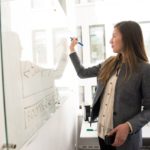


Ms. Wexler describes some curriculum frameworks that are making a difference in students’ content knowledge. The following are free!
Wit & Wisdom
American Reading Company



Where To Go From Here
So — what to do? Most teachers are not in the position to make changes in curriculum policy. Plus, teachers are mandated to teach the state’s curriculum standards, whether they like them or not. But there are ways to add more content knowledge to your curriculum, even in small ways. And doing something small is better than doing nothing at all.
But if your state or district are not using one of these knowledge-building curriculum frameworks, here are some tips for implementing more content knowledge in your classroom this week.
*Incorporate more nonfiction in your curriculum. In Reading Reconsidered, Doug Lemov suggests “layering” nonfiction text selections in a study of a fiction book.
If you are reading a fiction book to your class or using fiction in whole mini-lessons or using fiction texts in guided reading, look for more nonfiction that would give students background knowledge about something happening in the book.
For example, earlier in the year my class and I were reading Home of the Brave by Katherine Applegate together. This book is about a fictional character who is a refugee from Sudan. So I found some short nonfiction articles about the difference between immigrants and refugees and about refugee resettlement agencies, both key features in the book. Reading these articles helped my students develop a deeper understanding.



*CNN 10 is a free resource that discusses current events for kids. Depending on the topic, you might want to preview segments in advance.
*BrainPop is a subscription service. But if you can get your school or district to subscribe, it is a great resource.
The videos are short, entertaining, and informative. They also include quizzes after the videos which can be done as a whole class or assigned to individual students.
Other resources are: challenge activities, making a map, making a movie, coding activities, related reading activities, worksheets, graphic organizers, and games. There is a ton of stuff and it is well worth it!
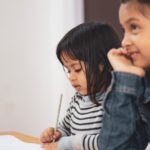


*Flocabulary is another subscription service. It combines information in fun, hip-hop songs that help kids remember the content. It also includes vocabulary activities, texts for reading and responding to questions, quizzes, and a “lyric lab” activity in which students use the vocabulary words from the video to write their own lyrics.
*Wonderopolis is a free site for lots of nonfiction topics. You can use the “Daily Wonder” or search for specific topics. Each wonder includes a passage to be read as a class or assigned to individuals. There is also a video, a list of “wonder words” (vocabulary), a quiz to test your knowledge, and some related activities.
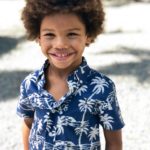


*Similar to Wonderopolis, Mystery Science has great videos on a variety of topics. (This is also a subscription service, but the free trial is great for trying it out.)
*Discovery Education is another subscription service with tons of resources. There are videos, images, and a review segment at the end of each video.
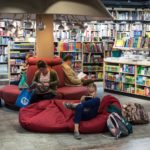


*EdPuzzle is a favorite (and free) resource. You can create your own videos or use one of many videos online.
One of my favorite EdPuzzle features is the ability to pause the video along the way and insert questions for your students to answer before they continue with the video.
Another awesome feature is that EdPuzzle stops if students click on another tab or leave the site. This keeps them from skipping the video you want them to watch!
*Nearpod is a new resource to me, but one which looks promising. It includes resources for interactive lessons on a variety of topics.
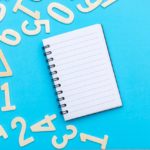


*If you are teaching anything related to the American Revolution, Liberty’s Kids videos on YouTube are a must. Students love these and they are super informative. If you want to take this a step further, here is a resource on Teachers Pay Teachers with quizzes and reflection questions for each video!
*Sheppard Software is a free resource with lots of online games for kids. I have not used this resource as much in content areas, but it looks promising.
While you would still need to incorporate content from other resources, this would be a great resource for review and reinforcement of learning.
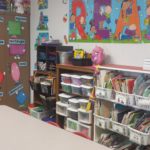


*I cannot say enough good things about ReadWorks, a free resource with so many great content reading passages. They also include audio versions of their passages, vocabulary activities, and question sets for their passages.
*NewsELA is another (mostly) free resource for good reading passages. Some of their resources are available only by subscription, but even the free resources are outstanding.
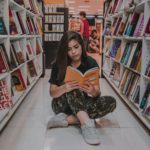


*iCivics is a free resource for teaching civics lessons.
*You can’t beat National Geographic for a wide range of quality resources.
*I haven’t used the National Science Digital Library, but I have heard good things about it. Definitely worth checking out!
*Nova has awesome science videos on a wide variety of topics.
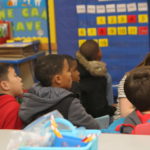


*Smithsonian Science Education Center is another quality resource
*CK-12 has many resources for math, science, and social studies
*PhET Interactive Simulations – these look like promising resources for engaging students.
I highly recommend reading Natalie Wexler’s The Knowledge Gap: The Hidden Cause of American’s Broken Education System — and How to Fix It. I would love to hear your thoughts when you read it!
